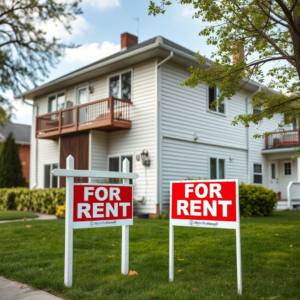The American dream has long been anchored in the idea of stable housing—a place to call home, raise a family, and build a future. But for millions of renters across the United States, this dream is increasingly slipping out of reach. A recent analysis reported by Planetizen sheds light on a stark and growing crisis: more than 50% of U.S. tenants are now rent burdened, spending over 30% of their monthly income on housing.
Understanding the Rent Burden
A household is considered “rent burdened” when it allocates more than 30% of its income toward rent. Those spending more than 50% are deemed “severely rent burdened.” This isn’t just a technical threshold—it’s a financial red flag. When rent consumes such a large share of income, families are forced to make difficult trade-offs between food, healthcare, education, transportation, and savings. It also leaves little room for emergencies, pushing renters into cycles of debt and instability.
The consequences are more than financial—they’re deeply personal and societal. High rent burdens can lead to evictions, school instability for children, worsened health outcomes, and barriers to upward mobility.
Who’s Most Affected?
The burden is not distributed equally. The most vulnerable groups bear the heaviest weight:
-
Seniors on fixed incomes face the challenge of rising rent with no capacity to increase earnings.
-
People with disabilities are more likely to live on limited or government-assisted income, restricting their housing options.
-
Low-income families and single parents often face higher rent burdens while also contending with the cost of childcare and transportation.
-
Essential workers and caregivers—those who kept society running during the pandemic—are often among those struggling most to stay housed.
In states like Kentucky, over 40% of renters are rent burdened, and more than 20% are severely rent burdened. But this issue isn’t confined to any one region. From coastal cities like San Francisco and New York to mid-sized cities and rural towns, housing affordability is a growing concern.
The National Housing Shortage
The root of the problem lies in a persistent shortage of affordable housing. As of 2022, the U.S. had a deficit of 4.5 million housing units, up from 4.3 million in 2021. The supply of homes simply isn’t keeping pace with demand—especially for units that are affordable to low- and moderate-income renters.
New housing development is often stalled by:
-
Restrictive zoning laws that limit multi-family or affordable housing construction.
-
Community opposition (NIMBYism) that resists change and diversity in housing types.
-
High land and construction costs, which discourage builders from developing lower-cost units.
The result? A housing market that increasingly caters to higher-income individuals, leaving low- and moderate-income families with few options and intense competition for the limited affordable units available.
Wages Lag Behind
Adding to the challenge is the widening gap between wages and housing costs. Even as rent has climbed dramatically in the past decade, income growth has lagged behind. In many metropolitan areas, renters must now earn double or triple the local minimum wage to afford a modest two-bedroom apartment.
This disconnect between earnings and rent creates a perfect storm—where even full-time employment doesn’t guarantee housing security. For example, a person earning the federal minimum wage would need to work nearly 100 hours per week to afford a modest one-bedroom rental without being rent burdened.
The Domino Effect: Evictions and Homelessness
When renters can no longer afford their homes, the dominoes start to fall. In recent years, cities across the country have reported sharp increases in evictions—especially in communities where rent relief programs have ended or protections have lapsed.
Meanwhile, homelessness has surged, with more than 653,000 people unhoused in 2023—the highest number ever recorded in the U.S., according to HUD. For families with children, the consequences are particularly devastating, affecting education, physical and mental health, and long-term prospects.
What Can Be Done?
The rent burden crisis won’t resolve itself. It demands bold action at every level of government and from both the public and private sectors. Solutions must be immediate, sustainable, and inclusive. Key recommendations include:
1. Expand the Affordable Housing Supply
-
Invest in federal and state-funded housing programs.
-
Remove zoning barriers that block the development of multi-family and mixed-income housing.
-
Offer tax incentives and subsidies for developers building below-market-rate units.
2. Strengthen Rental Assistance Programs
-
Expand access to Housing Choice Vouchers.
-
Increase funding for emergency rental assistance.
-
Make income-based rent programs more accessible and easier to navigate.
3. Protect Tenants’ Rights
-
Enforce anti-discrimination laws in housing applications.
-
Cap excessive rent increases through rent control or rent stabilization programs.
-
Offer legal aid to tenants facing eviction.
4. Support Fair Wages and Economic Mobility
-
Raise the federal minimum wage to reflect the cost of living.
-
Promote workforce development and skills training.
-
Expand access to affordable childcare and healthcare, freeing up income for housing.
5. Encourage Community-Based Solutions
-
Partner with nonprofits and faith-based organizations to build and manage affordable units.
-
Engage community members in planning and advocating for inclusive housing developments.
Final Thoughts
Housing is not a luxury—it’s a basic human need. Yet for half of U.S. renters, keeping a roof over their heads comes at the expense of nearly everything else. As this crisis deepens, so does its impact on the economy, education system, public health, and the social fabric of American life.
Without strategic intervention, rent burdens will continue to lock families in cycles of poverty, hinder mobility, and exacerbate inequality. But with the right policies, partnerships, and collective will, we can restore housing as a stable foundation for opportunity, growth, and dignity.
Source:
Half of US Tenants Are ‘Rent Burdened’ | Planetizen News

